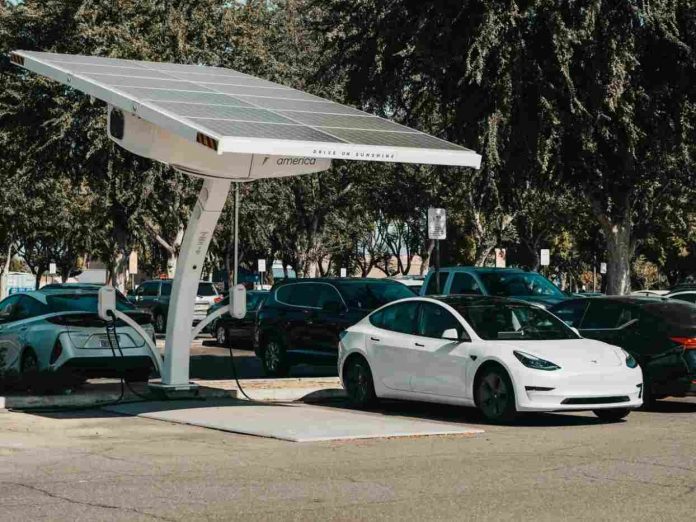Electric vehicles (EVs) are no longer a futuristic novelty—they are reshaping how Britain drives, reduces emissions, and plans for a sustainable future. Yet, questions about the longevity of fully battery electric vehicles (BEVs) have long tempered adoption, with consumers and policymakers unsure whether EVs can match the lifespan of petrol and diesel cars.
A new study in Nature Energy shows that modern BEVs are rapidly closing this gap, challenging assumptions about durability and environmental impact (Nguyen-Tien et al., 2025).
Tracking Vehicle Lifespan with Big Data
To answer questions about vehicle longevity, researchers analyzed nearly 300 million anonymized MOT (Ministry of Transport) tests covering approximately 30 million vehicles in Great Britain between 2005 and 2022.
MOT tests—mandatory for vehicles over three years old—track roadworthiness, mileage, engine type, make, color, and testing location. By monitoring when vehicles stopped attending MOT tests, the team inferred retirement or scrappage dates.
The study used survival analysis, specifically a Weibull proportional hazard model, to estimate how long vehicles remain in operation. This method accounts for factors such as driving intensity, engine size, location, make, color, and year of first registration. Vehicles were grouped into four main powertrains: petrol (PE), diesel (DI), electric (EL), and hybrid (HY), with a primary focus on comparing BEVs against petrol and diesel cars.
Results: Modern BEVs Last Longer Than Ever
Early BEVs were less reliable than internal combustion engine vehicles (ICEVs), reflecting the growing pains of new technology.
However, the study finds that rapid improvements in battery design, manufacturing quality, and vehicle technology have enabled newer BEVs to achieve lifespans comparable to—and sometimes surpassing—traditional petrol and diesel vehicles in the same cohorts.
Longevity is influenced by multiple factors: driving intensity, engine size, vehicle make, geographic location, and even color. For ICEVs, larger engines typically shortened vehicle life, while for BEVs, better battery management and usage patterns were critical.
These findings highlight that assumptions of a uniform EV lifespan, often used in life cycle assessments (LCAs) and total cost of ownership (TCO) studies, are outdated. Instead, BEV longevity is dynamic, improving steadily with newer models.
Implications for Consumers and Industry
For consumers, longer-lasting BEVs mean better returns on investment. While upfront costs remain higher than ICEVs—currently around $12,000 more on average—operating costs are lower, thanks to cheaper electricity and reduced maintenance needs. This makes BEVs increasingly cost-effective over time, especially for households that drive frequently or keep vehicles for several years.
For the automotive industry, the findings provide critical insights for fleet replacement planning and end-of-life management. With more BEVs expected to remain on the road longer, companies must consider battery replacement costs, recycling options, and secondary applications for used batteries.
Environmental and Policy Implications
The environmental case for BEVs strengthens with longer lifespans. While EV production is resource-intensive—requiring six times the critical minerals of a conventional car—the benefits of zero-emission driving accumulate as vehicles remain operational.
The longer a BEV lasts, the more it offsets its initial environmental footprint, particularly as electricity grids become greener.
However, the study emphasizes the importance of a circular battery economy. Replacement batteries must be affordable relative to vehicle value to prevent premature scrappage. If battery costs remain high, the longevity advantage of BEVs could be undermined, affecting both economic and environmental outcomes.
Policymakers can also use these insights to support sustainable mobility strategies, including incentives for BEV adoption, regulations on battery recycling, and urban planning for EV infrastructure.
Caveats and Future Research
The authors caution that their estimates rely on MOT compliance and historical trends. Factors such as government scrappage schemes, insurance costs, and unforeseen technological issues could influence vehicle longevity.
Battery degradation, particularly for older lithium-ion packs, remains a potential challenge, although current evidence suggests many EV batteries outlast the vehicles themselves.
Future research could integrate export patterns of used EVs, extend analyses to heavy-duty vehicles, or explore regional differences in driving behavior and climate effects. Doing so will provide an even richer understanding of how BEV adoption contributes to a net-zero transport future.
Conclusion
Nguyen-Tien et al. (2025) provide compelling evidence that BEVs are no longer short-lived alternatives to ICEVs. Technological advances, better battery performance, and evolving consumer behavior have combined to close the longevity gap, enhancing both economic and environmental advantages.
For drivers, fleet managers, and policymakers, the message is clear: BEVs are a sustainable, long-term investment with a growing role in the UK’s transition to low-carbon transport.
Reference
Nguyen-Tien, V., Zhang, C., Strobl, E., & Elliott, R. J. R. (2025). The closing longevity gap between battery electric vehicles and internal combustion vehicles in Great Britain. Nature Energy, 10, 354–364.
